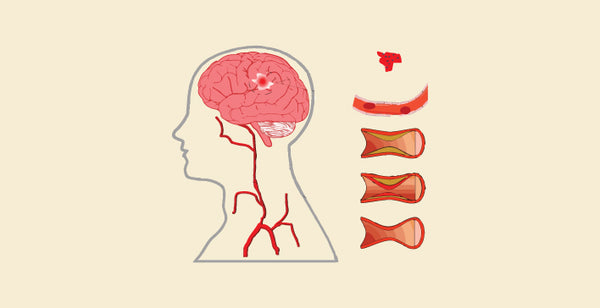Difference Between Hypoxia and Ischemia: oxygen availability versus blood flow. Hypoxia refers to low oxygen levels in the tissues, regardless of blood flow. Think high-altitude climbing, where the air itself has less oxygen. In contrast, ischemia specifically means reduced blood flow, which indirectly starves tissues of oxygen. Imagine a blocked artery preventing oxygen-rich blood from reaching a limb. Both conditions deprive tissues of vital oxygen, but by different mechanisms.
Hypoxia
- Insufficient oxygen reaching the tissues.
- Can be generalised (affecting the entire body) or localised (affecting a single organ).
- Caused by a variety of circumstances including high altitude, respiratory issues, anemia, and carbon monoxide poisoning.
- Symptoms include shortness of breath, weariness, disorientation, and bluish skin.
Ischemia
- Reduced blood flow to a tissue, depriving it of oxygen and nutrients.
- Often accompanies hypoxia but can occur independently (e.g., blocked artery).
- Common in heart attacks, strokes, and peripheral artery disease.
- Symptoms vary depending on affected tissue; may include pain, numbness, weakness, or tissue death.
Order the Best Jogger Scrub from Here!
Differences Between Hypoxia and Ischemia
Hypoxia and ischemia are both medical conditions involving inadequate oxygen supply to tissues, but they have distinct characteristics. Following are the differences between the two:
|
Difference |
Hypoxia |
Ischemia |
|
Definition |
Inadequate oxygen supply despite adequate blood flow |
Restriction or cessation of blood flow leading to oxygen deprivation |
|
Cause |
Various factors including low atmospheric oxygen, impaired oxygen transport, respiratory diseases |
Arterial blockages, thrombosis, embolism, vascular constriction |
|
Severity |
May be milder, reversible with prompt intervention |
Typically more severe, can lead to irreversible tissue damage |
|
Tissue Effects |
Cellular stress and dysfunction |
Profound cellular injury and death |
|
Duration |
Can be acute or chronic |
Usually acute, requires immediate intervention |
|
Manifestations |
Shortness of breath, cyanosis, confusion, rapid heart rate |
Chest pain, limb pain, numbness, weakness, tissue necrosis |
|
Treatment |
Oxygen supplementation, addressing underlying cause, ensuring ventilation |
Restoring blood flow through medications or procedures |
|
Affected Organs |
Can affect any tissue or organ |
Commonly affects organs with high metabolic demands |
|
Consequences |
Tissue damage, organ dysfunction, may not always be irreversible |
Often irreversible tissue damage, complications such as organ failure |
|
Diagnostic Tests |
Oxygen saturation measurement, arterial blood gas analysis, imaging studies |
Imaging modalities (angiography, Doppler ultrasound, MRI), clinical evaluation |
Browse Best Scrubs Collection
What is Hypoxia?
Hypoxia refers to a condition where the body or an organ isn't getting enough oxygen. This can happen for various reasons, such as being at high altitudes, breathing in smoke or carbon monoxide, or having a heart or lung condition. When the body doesn't have enough oxygen, it can't function properly and can start to damage cells and tissues.
Key Features of Hypoxia:
- Hypoxia occurs when the blood itself doesn't carry enough oxygen. This can be due to various factors like low oxygen in the air (high altitude), lung problems (pneumonia), anemia, or heart failure.
- As cells are deprived of oxygen, they switch to anaerobic metabolism, producing less energy and lactic acid, leading to cellular dysfunction and potentially organ failure if prolonged.
- Symptoms: Early symptoms include shortness of breath, rapid breathing, and fatigue. Severe hypoxia can cause confusion, headache, blue skin (cyanosis), and loss of consciousness.
- Treatment: Focuses on increasing oxygen delivery to the blood, using techniques like oxygen therapy, treating the underlying cause (e.g., medication for heart failure), and potentially blood transfusions in severe cases.
What is Ischemia?
Ischemia is a disease that restricts blood flow to an organ or tissue. This can happen for a variety of causes, including a blood clot, artery constriction, or a heart attack. When blood flow is limited, the organ or tissue does not receive the oxygen and nutrients required to operate correctly. This can cause cell death and tissue damage.
Key Features of Ischemia:
- Ischemia occurs when blood flow to a specific tissue is blocked. This can happen due to blood clots, narrowing of arteries (atherosclerosis), or injuries damaging blood vessels.
- The lack of oxygenated blood directly impacts the affected tissue, causing damage and potentially cell death. The specific symptoms depend on the affected tissue (e.g., chest pain in heart ischemia, limb pain in limb ischemia).
- Symptoms: Symptoms vary based on the affected tissue but often involve pain, weakness, numbness, and decreased function in the affected area. Severe ischemia can lead to tissue death (necrosis) and potentially limb loss or organ failure.
- Treatment: Aims to restore blood flow to the affected tissue quickly. This might involve medications to dissolve clots, surgical procedures to open blocked arteries (e.g., angioplasty, bypass surgery), or other interventions depending on the cause.
Shop Best Lab Coats from Here!
Similarities Between Hypoxia and Ischemia
- Ischemia and hypoxia are conditions when tissues do not receive enough oxygen.
- If left untreated, they may result in tissue damage and cellular malfunction.
- Organ malfunction, discomfort, and tissue discolouration are possible symptoms of both disorders.
- Though using different methods, treatment for both may entail treating underlying problems and restoring oxygen supply.
- To avoid problems and reduce tissue damage, these disorders need to be closely monitored and managed.
| Check out More Articles | |
| Difference Between Tendon and Ligament | |
| Difference Between Seizure and Epilepsy | |
| Difference Between Hypothyroidism and Hyperthyroidism | |















